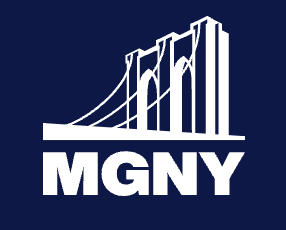Drop, Meet Ocean: MGNY's Yuri Geylik To Talk About NYC Affordable Housing Crisis At Bisnow Event On Aug. 23

More than 16,000 affordable housing units remain in the development pipeline for New York’s popular 421-a program, a tax exemption for developers that expired in 2022.
That number may sound high, until one considers the projected need for new housing in New York City. By one estimate, the city requires 560,000 new housing units of all types by 2030 to keep up with growth.
“The need for more affordable housing is staggering,” said Yuri Geylik, CEO of MGNY Consulting, a firm that offers advisory, marketing and management services in the city’s affordable housing market. “Sixteen-thousand units, of which only about 60% are new development units, is just a drop in the ocean.”
Geylik, who joined MGNY shortly after it was founded in 2008 and whose firm works closely with the city’s Department of Housing Preservation and Development, has an insider’s view of the city’s housing crisis. He will share his observations and recommendations at Bisnow’s New York Affordable Housing Conference on Aug. 23. Register here for the event.
Geylik will be part of a panel discussing a replacement for 421-a. Until the program is renewed or replaced, the affordable housing situation in New York will remain dire, he told Bisnow in a recent conversation.
Bisnow: Give us an overview of affordable housing in the city as you see it.
Geylik: There isn't enough affordable housing being created, and rental development isn’t possible in inclusionary housing zones without the 421-a tax exemption. The affordable housing units that were created in the context of the 421-a(16) program were at 130% of the area median income in the outer boroughs. That specific affordability level — while important for middle-income earners — does not do anything for New Yorkers who are in the lower brackets of income, unless they rely on additional rent subsidies compatible with 130% AMI rents.
In spite of that, 421-a was by far the most robust vehicle for creating affordable units, and without it, there aren't any good alternatives for developers to build privately financed affordable housing. Unfortunately, the advice you often hear today is to not build affordable units in New York City until there is a replacement for 421-a.
Bisnow: Tell us more about the challenges confronting participants in the affordable housing market.
Geylik: Both developers and regular New Yorkers who are applying for housing have challenges. There's a lot of bureaucracy and red tape, and no matter how fast we process a single application for a new development, it takes months from the beginning of an application review to the lease signing.
The city is trying to get creative in its efforts to solve the homeless crisis. Most recently, the housing lottery rules were changed to compel developers in the 421-a program that have 130% AMI units to accept individuals from the homeless shelter system.
This means the developers in the least desirable neighborhoods are incentivized to up their rents to the max and then to fill the rest of their buildings with homeless people. And there's no guarantee of how the program will be funded later.
On the other hand, luxury developers and their investors who thought that they were creating middle-income housing instead end up with a certain percentage of homeless housing in their buildings.
The management companies have no systems in place to support residents from the shelter system, who sometimes have drug-related issues, domestic violence or other problems. And this policy just relocates the individuals into a situation where they don't feel comfortable and no one takes care of their needs.
The intention behind the plan was good, but basically, the city came up with a loophole to shift the responsibility of taking care of its vulnerable homeless population from the city to private developers. And that is a big problem.
Bisnow: What should a replacement for 421-a look like?
Geylik: The replacement program has to be common sense-based and include multiple AMI brackets, with the aim of creating durable communities within NYC neighborhoods.
There should be an option where a developer knows upfront that if they commit to developing supportive housing for individuals from the homeless system, the city will provide a social worker on premise who can take care of the needs of this vulnerable population. They could incentivize nonprofits to provide supportive services for the vulnerable population.
The state legislature could also provide some additional incentive for developers, maybe allowing higher rent options to provide housing to populations with the highest risk of homelessness. But it would be transparent and people would be going into it with a business plan versus the situation we have now. Currently, there are incentives to jack up the rents in the neighborhoods where those rents are unsustainable, while the vulnerable population suffers from a lack of support.
Bisnow: Why do you think the New York Affordable Housing Conference is a good venue to discuss these issues?
Geylik: The Bisnow community is vibrant and this event allows for creative ideas to be shared on how to resolve the challenges we face. It will attract some of the brightest industry leaders. Every time I participate in a Bisnow event, I learn something or build a new business relationship.
Register here for Bisnow’s New York Affordable Housing Conference on Aug. 23.
This article was produced in collaboration between MGNY Consulting and Studio B. Bisnow news staff was not involved in the production of this content.
Studio B is Bisnow’s in-house content and design studio. To learn more about how Studio B can help your team, reach out to studio@bisnow.com.

